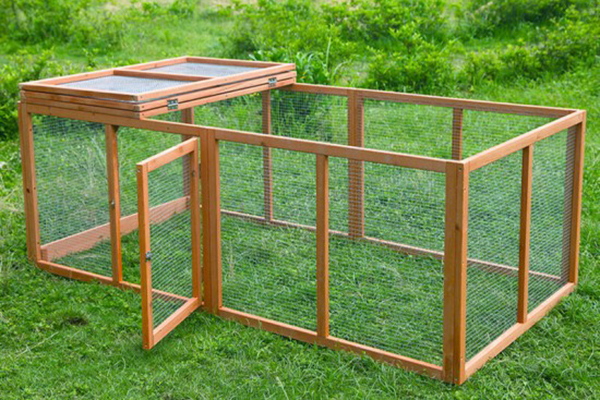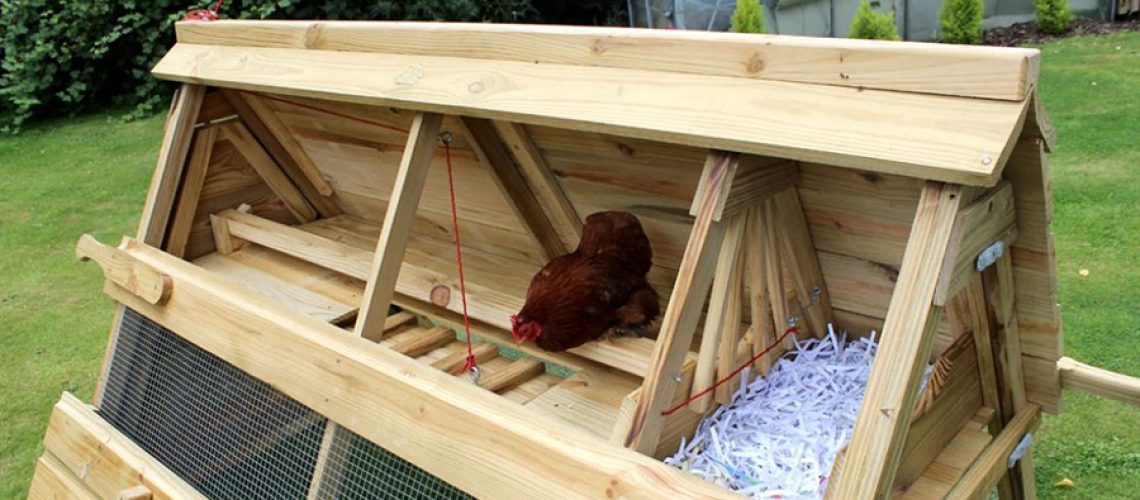1.Why Choose Wood?
Wood is a natural, renewable resource that has been used for centuries in construction. When it comes to building chicken coops, wood offers several advantages:
- Insulation: Wood is an excellent insulator, helping to keep the coop warm in winter and cool in summer.
- Durability: Well-maintained wood can last for many years, providing a sturdy shelter for your chickens.
- Aesthetics: The rustic charm of wood can enhance the visual appeal of any backyard.
2.Choosing the Right Wood
When selecting wood for your chicken coop, consider the following types and their properties:
- Cedar: Known for its natural resistance to decay and insects, cedar has a pleasant aroma that can help keep the coop smelling fresh.
- Redwood: Durable and resistant to moisture, redwood is an excellent choice for areas with high humidity.
- Pine: A more affordable option, pine is easy to work with but may require additional treatment to prevent rot.

3.Design Considerations
When designing a wooden poultry cage, consider the following elements:
- Size: Ensure the cage for chickens is spacious enough for the number of chickens you plan to house.
- Ventilation: Proper air circulation is crucial for the health of your chickens.
- Nesting Boxes: Provide a quiet, dark area for hens to lay eggs.
- Roosting Bars: Chickens need places to perch at night.
- Accessibility: Easy access for cleaning and egg collection is a must.
4.Building Your Coop
Building a wooden layer chicken coop can be a rewarding DIY project. Here are some steps to guide you:
- Planning: Sketch out your design, considering the needs and preferences mentioned above.
- Materials: Choose pressure-treated lumber for the frame and exterior to resist rot and pests.
- Construction: Start with the frame, then add walls, a roof, and any additional features like windows or doors.
- Finishing: Apply a weather-resistant sealant to protect the wood and prolong its life.
5.Advanced Coop Features
For the enthusiast looking to go beyond the basics, consider these advanced features:
- Automatic Chicken Coop Door: These can be programmed to let your chickens out to roam during the day and back in at night.
- Insulated Flooring: To keep the coop warm during the cold months, consider adding insulation beneath the floor.
- Rainwater Harvesting System: Set up a system to collect rainwater for the chickens’ drinking needs.

6.Chicken House Accessories
Enhance your chicken coop with these useful accessories:
- Perches: Ensure they are the right height and material for comfortable roosting.
- Feeders and Waterers: Choose from hanging or floor models, and consider automatic versions for convenience.
- Cleaning Tools: A good broom, dustpan, and shovel make coop maintenance easier.
7.Maintenance and Care
A well-maintained wooden chicken coop will serve you and your chickens well. Regular maintenance includes:
- Cleaning: Remove droppings and clean the coop regularly to prevent the buildup of bacteria.
- Inspection: Check for signs of wear and repair as needed.
- Sealing: Reapply sealant every few years to protect against the elements.

8.Benefits of Wooden Chicken Coops
- Eco-Friendly: Wood is a sustainable choice that can be sourced responsibly.
- Customization: You can design and build a coop that fits your specific needs and preferences.
- Aesthetic Appeal: A well-crafted wooden coop can be a beautiful addition to your property.
Conclusion
A wooden chicken coop is not just a practical solution for housing chickens; it’s also a testament to the timeless craftsmanship and charm of wood. With proper design, construction, and care, your wooden coop can be a sanctuary for your chickens and a source of pride for you.



